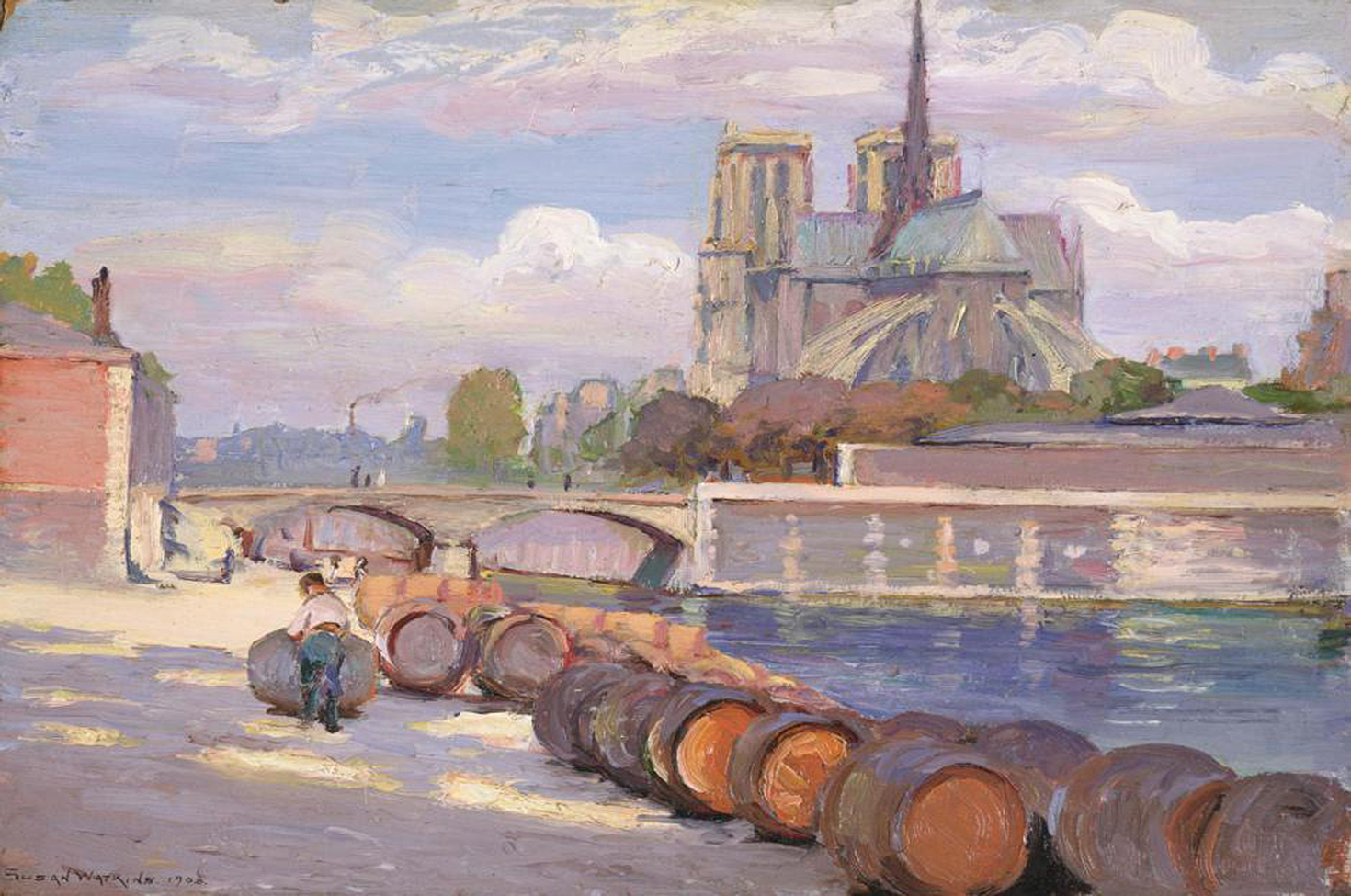
View of the Seine and Notre Dame from the Quai de la Tournelle, by Susan Watkins, 1908. Wikimedia Commons.
• Notre Dame and the future of preserving—and rebuilding—history: “Do we clean it up and make it all look unified, or do we try to let the memory remain? Every time they have a cathedral that needs restoration and tender loving care, there’s the question of, do you make it Disneyland, or do you let it decay? In this case, God willing, the cathedral will have some of its original structure left, and they’ll put it back as best as they can.” (Wired)
• The history of whitewashing Mexican food in Los Angeles. (Eater)
• A story of adaptation in the southern High Plains, as told by the history left in the landscape. (Archaeology)
• The Department of Justice has decided it wants to end its war on Standard Oil, which began more than a century ago: “The DOJ review includes a decree related to the Master Horseshoers’ National Protective Association of America, which barred thirteen defendants from blocking potential competitors from the market for ‘drilled horseshoes, adjustable calks or rubber hoof pads.’ At the time, major trusts and cartels aimed to control industries of all kinds, big and small. Not so much anymore in horseshoes, and the DOJ has proposed termination of the decree.” (The Wall Street Journal)
• The politics of repatriation in World War I and II. (Nursing Clio)
• “The dragon war machine of yore.” (Library of Congress Blog)
• “As we celebrate the two hundredth anniversary of Whitman, I hope that we can celebrate him while also telling the truth about his flaws—and America’s flaws.” (JSTOR Daily)
• “What the Teapot Dome Scandal Has to Do with Trump’s Tax Returns.” (Brennan Center)
• “The idea of the dentist as potential charlatan has a long and rich history.” (The Atlantic)
• “A little-known book of ‘latrinalia.’ ” (Public Domain Review)
• The origin of “red sauce.” (Bon Appétit)
• This week in obituaries: a historian of slavery; a Dryden scholar; and “a sculptor with a whimsical streak whose metalwork included quirky cutlery, an apple with lips, and bronze cabbages standing on chicken legs.”